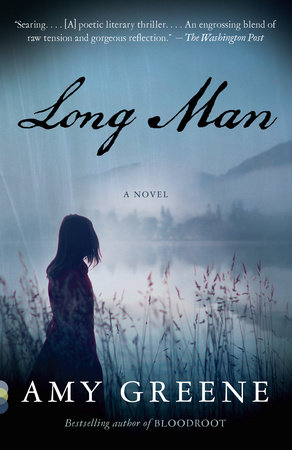Reading Group Center
- Home •
- Books by Category •
- Imprints •
- News •
- Videos •
- Media Center •
- Reading Group Center
Long Man
By Amy Greene
1. In the opening scene, Greene introduces us to Yuneetah and the TVA’s dam project through the point of view of Silver, who is unnamed and a self-proclaimed outsider. What does this perspective contribute to our expectations of what will happen to the town, to Silver’s niece and her child, and to nature? What does Silver’s framing narrative to the book as a whole tell us about how history is preserved?
2. Could a man other than someone like Sam Washburn have done a better job persuading Annie Clyde Dodson to evacuate? What makes Sam more or less suitable for this task, especially considering how the final events of the novel unfold?
3. “Something about her fierceness made her beautiful . . . she had the soul of [some]one much older,” Sam thought of Annie Clyde upon meeting her at her home (pp. 16–18). Discuss this paradoxical characteristic, noted by others in the novel as well, in terms of Annie Clyde’s role as mother, wife, daughter, and niece.
4. How does Greene inflect her descriptions of nature—from the humming cicadas and pine trees to the murky caves and ruddy clay of the earth—to tell the troubled history of the region’s landscape?
5. The title of the novel most clearly refers to the river that is about to flood Yuneetah. But what are some other interpretations of what—or who—Long Man is? Does it ever become a character in its own right? Is it mostly a source of good or harm, as it clearly was for James and his family?
6. When Amos hears about the TVA dam and arrives back in town after years of drifting, he “hope[s] at least one of them had held out against the power company” (p. 24). What do you make of the fact that Annie Clyde, who is his biggest enemy throughout the novel, is that very person? How are these two forceful individuals more similar than perhaps they are aware? Does this underlying connection change how you think of either of their morally ambiguous choices, or reflect in any way upon the people who love them?
7. What religious forces and beliefs are at play in Yuneetah? How does Beulah Kesterson exemplify the gray area between formal religion and a more nature-based belief system that is rich in East Tennessee?
8. We learn early on that “Amos liked children” (p. 31). Did this detail increase your suspicion of him as Gracie’s kidnapper?
9. From the bones buried in the soil to those about to be washed away, what does the land/nature reflect of the town’s ancestry?
10. Trace the connections and loyalties—both intact and broken—between the generations of female characters in the novel. How do these relationships between mothers and daughters propel the plot and affect women’s interactions with men, especially those in power?
11. What keeps James and Annie Clyde together besides Gracie’s disappearance? How would you describe the nature of their relationship and attraction to each other? Consider what James thinks when they are courting: “She had a mysteriousness that made him need to unravel her” (p. 74).
12. How does the love triangle between Amos, Silver, and Ellard Moody complicate the search for Gracie? Does Silver do the right thing in defending Amos’s innocence?
13. To what degree does Annie Clyde demonstrate her guilt and/or vulnerability in the novel?
14. Ellard thinks Yuneetah “had never been of much concern to outsiders” (p. 133). How does Greene establish the time period and economic/social circumstances of the Depression crippling the nation at large, while maintaining the insular focus on the town and these few days? What does Amos contribute to that context that another character might not be able to as effectively?
15. Consider the novel’s relationship to time. How is it depicted on large and small scales? What is the balance of the linear chronology of the present—the search for Gracie—with the larger nexus of the characters’ pasts and even futures as they are explored throughout?
16. What makes Gracie and her dog, Rusty, so close, including on a narrative level at the start of the August 2 section (p. 205)?
17. How is Amos, a man so unpredictable and itinerant, able to execute his complex, thoroughly contrived plan to blow up the dam? What are his larger motives? How do they compare to those of the TVA?
18. Is Annie Clyde defeated in the end? Which character gives the clearest sense of how she heals in the year after the dam?
19. What did you take away from the novel about the role of the government and its impact on real people’s lives, both during the Great Depression and today?
20. How are Annie Clyde’s and Yuneetah’s struggles to keep the land as it is similar to and different from the struggles of contemporary environmental issues, including fracking and flood/storm damage?


